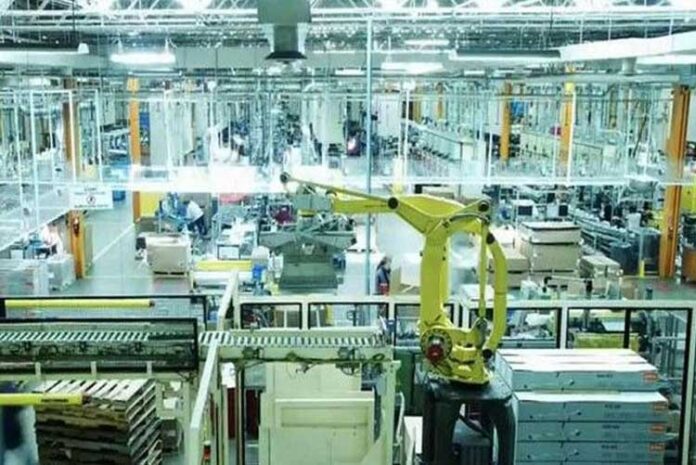THE COUNTRY’S FACTORY output extended its losing streak to 11 months in January, amid soft global demand and supply disruptions caused by the pandemic, the Philippine Statistics Authority (PSA) reported on Tuesday.
Preliminary results of the PSA’s latest Monthly Integrated Survey of Selected Industries (MISSI) showed factory output, as measured by the volume of production index (VoPI) fell by 16.7% year on year in January, faster than the 12% drop in December 2020 and a reversal of the 1.9% growth a year earlier.
Manufacturing has been on a decline since March last year when strict lockdown restrictions were implemented to contain the spread of the coronavirus disease 2019 (COVID-19).
The January MISSI marked the first time the statistics agency used 2018 prices compared with 2000 prices used in the previous surveys.
The PSA noted annual decreases in 18 out of 22 industry divisions in January led by the manufacture of wood, bamboo, cane, rattan articles and related products (-53.4%), manufacture of machinery and equipment except electrical (-48.9%), and manufacture of tobacco (-42.6%).
The capacity utilization — the extent to which industry resources are used in producing goods — averaged 46.1% in January, down from 49.1% the previous month. Of the 22 sectors, only seven averaged a capacity utilization rate of at least 50%.
This was in stark contrast to the 72.8% utilization rate for December 2020 that was reported last month. According to the PSA, the revision was due to the increase in responding establishments as well as the adoption of a new methodology.
In comparison, the IHS Markit Philippines Manufacturing Purchasing Managers’ Index (PMI), which uses a different set of parameters, posted a 52.5 reading in January, above the neutral 50 mark which separates expansion from contraction and an improvement from the 49.2 figure in December 2020 and 49.9 in November. This was the highest expansion compared with 52.1 posted in January 2020.
In an e-mail, UnionBank of the Philippines, Inc. Chief Economist Ruben Carlo O. Asuncion said the latest VoPI result may be “a momentum of decline” given the expansionary trend shown in the country’s PMI during the same month.
“It may be that the increasing economic activity and demand may have not been translated yet to increasing factory output,” he said.
Mr. Asuncion said there may be a lag between the uptick in PMI and VoPI, but cautioned to wait and see how the February data would look like for the latter.
“If [the] decline [in VoPI] is arrested, then the lag is confirmed… Otherwise, that’s when we start to worry,” he said.
Speaking for the electronics industry, Semiconductor and Electronics Industries in the Philippines, Inc. President Danilo C. Lachica attributed the sector’s decline to the ongoing pandemic-related disruptions in the supply chain and operations.
“Our industry is highly dependent on China for the import of raw materials, so when the air and sea logistics were shut down, obviously we don’t have raw materials. We just started to pick up the slack when commerce reopened,” Mr. Lachica said in a Zoom call interview.
Mr. Lachica also pointed to the January PMI result, which indicated that the manufacturing sector is recovering.
Asked on their outlook for factory production, Mr. Lachica said: “We cannot speak for the whole manufacturing industry, but for electronic exports, we project a 7% growth for 2021 [from the actual 8.8% decline in 2020].”
PSA trade data as of December 2020 showed electronic products accounting for 70% of the country’s manufactured goods exports and 58% of total merchandise exports last year. Semiconductors alone accounted for 44% of last year’s sales in goods abroad. — Ana Olivia A. Tirona

